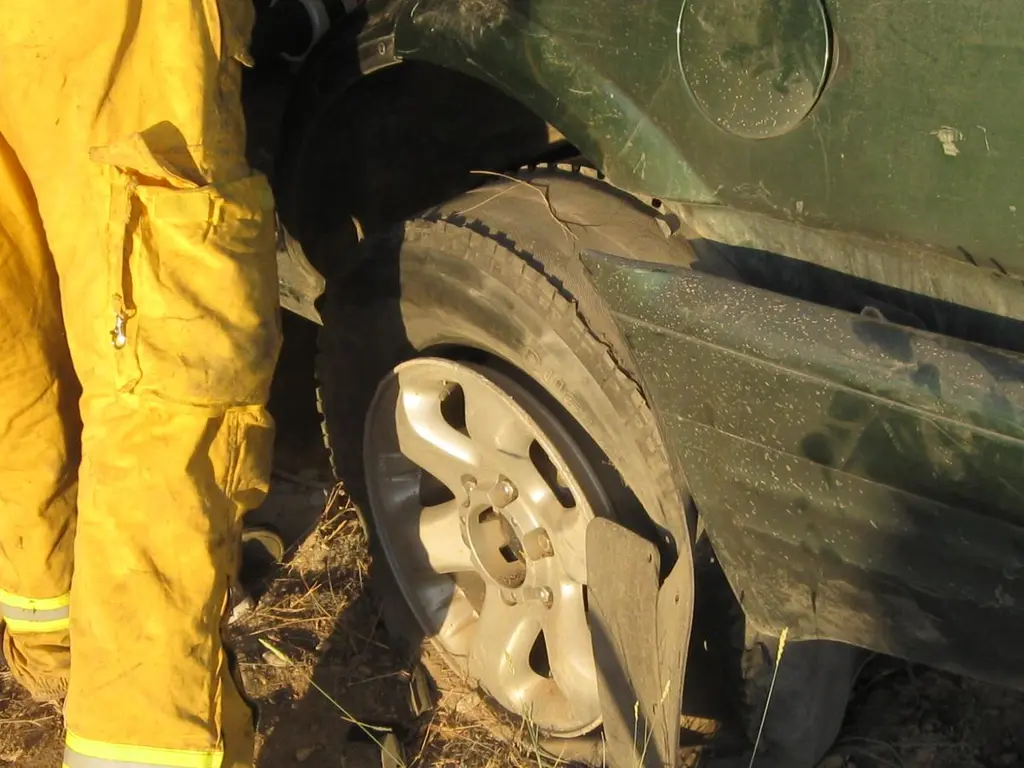Simply put, tires go bad over time, whether used or unused. If you’re going to drive your collector vehicle, you should make sure that your tires are no more than 6 years old. If your tires are older than 5 years, make sure they’re inspected thoroughly for cracks or anything else that could cause them to fail.

- Are old tires dangerous?
- Old tires are dangerous, regardless of tread depth. While there’s no federally sanctioned safety guidance on when a tire is too old to be safe, many carmakers recommend replacement at six years from the date of manufacture. Old tires have been the culprit in fatal accidents. Here are just two examples:
- Why do tires get damaged?
- Tires can become damaged for a variety of reasons, and it can happen without the driver being immediately aware there’s a problem. The most common types of damage are punctures, cuts, impacts, cracks, bulges and irregular wear.
- How long do old tires last?
- For what it’s worth, the USTMA did a review of several thousand recently scrapped tires and found that most were three to four years old. There was no way of telling how many miles were on those tires, but it’s easy enough to multiply four years by 15,000 miles annually to confirm the rough approximation of tire durability.
- What happens if you don’t replace your tires?
- If not replaced, the tire could eventually fail. The best way to get the most mileage out of your tires and to avoid a blow-out is to ensure your vehicle is in good operating condition, check your tire air pressure regularly, and drive carefully to avoid road hazards.
Should I buy 5 year old tires?
The National Highway Traffic Safety Administration (NHTSA) and official manufacturers suggest a tire is only 100% safe to use until it turns 5-6 years old.
- Are 5 year old tires OK?
- Five year old tires better be OK … mine are 10 years old. Recent bulletins from the tire industry indicate that tires degrade simply due to time. The age of a tire is important even if the tire is unused. There some disagreement over how to best express this age limitation, but my take is:
- When should I replace my tires?
- Generally, there are two different factors that impact when to replace tires: wear and age. Tire Wear: All tires eventually begin to experience wear. How the tire wears can be a indication of an issue with your alignment or tire pressure. Tire tread should wear evenly across the whole tire rather than on the inside or outside of the tire.
- How long are tires safe to use?
- However, official manufactures and the National Highway Traffic Safety Administration (NHTSA) claim that a tire can only be considered 100 percent safe to use till it turns 5 to 6 years old. However, if checked regularly for issues after the 5th year, unused tires can be deemed safe to use for up to 10 years.
- What is the age limit for stored tires?
- Broadly speaking, the age limit for stored tires is more or less the same as for used tires. However, official manufactures and the National Highway Traffic Safety Administration (NHTSA) claim that a tire can only be considered 100 percent safe to use till it turns 5 to 6 years old.
Should I buy 3 or 4 tires?
Although new front tires will spread water and maintain traction, worn tires in the back will hydroplane and may cause the vehicle to spin out, says Tire Review. This is the same for vehicles with rear-, front- or all-wheel drive. Ideally, you’d replace all four tires.

- Do I need to replace all 4 tires at a time?
- The answer to this question really depends on your car. Most of the cars on the road today are front-wheel-drive, and a few are rear-wheel drive. These don’t necessarily need to have all four tires replaced at once. Usually two at a time is sufficient.
- How do I avoid buying more than one tire?
- One way to avoid buying more than one tire is to have the tread on the new one “shaved” so it matches the depth of the others. Some tire dealers will shave off some tread depth on a special machine for a fee. If you decide to replace only one tire, the replacement should be the same model,…
- Should I put new tires on the back of my car?
- It’s best to replace all four tires at once, but if you must replace them in pairs, put the new tires on the back (regardless of whether the car is front- or rear-wheel-drive). This will help the car retain its stability and predictability in a panic swerve. (Older tires on the rear will make the car more likely to spin out.)
- Should I buy a single tire or split a pair?
- Flat tires tend to happen one at a time. The ideal scenario is to replace all four tires, but that can be costly. So to address a tread puncture or sidewall tear, can you buy just a single tire or split the difference and replace a pair? The first thing to consider is whether or not your car is all-wheel or two-wheel drive.






